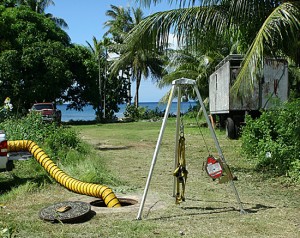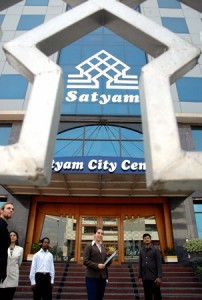I have mentioned Pipe Networks before, more specifically their “Project Runway” surviving a near death credit crunch experience. There have been two interesting developments since that time.
The first is that Pipe have put up a blog tracking the progress of the cable installation. You can view it at pipeinternational.com. As with their DC3 data centre blog they have uploaded a ton of photos and commentary on a very regular basis. I am sure customers, creditors and other participants in the Australian networking industry appreciate the transparency of information delivered through these blogs. It is fascinating to see that, in the end, the data is flowing through a rather unglamorous combination of copper, concrete, seawater and sand. It is also great to see a company recognise the power of blogs as PR delivery mechanisms. I am sure they raise the public profile of the company significantly.
Also on the PR front the Pipe Networks CEO, Bevan Slattery, participated in an interview with Business Spectator’s Isabelle Oderberg. This interesting interview starts off with a glimpse at how close the project came to collapsing, and concludes with some comments regarding the NBN process and goals. I do agree that the Government is tackling the problem from the wrong end, they should be starting at the core and moving outwards. I guess it is easier to present end solutions to the common voter, you can’t deliver bit size statistics like 50% more bandwidth will mean 50% wholesale price cuts which will mean 50% consumer broadband saving.
Maybe the same is also true for the NBN tenderers? If the tender was only for backhaul, could they be guaranteed enough customers to viably support duplicating the infrastructure? Do they need retail customers and the bundling of products to put together a firm business case and profit margin? Again the big question is, if this rollout is viable then why has no-one done it already? At the end of the day the problem always lies with Telstra, they simply own everything that matters. Scarily, this monopoly is now extending into the wireless spectrum. Backhaul competition is a great first stage, and perhaps with the current financial state the tender process should be limited to that for now. But there should always be a second stage planned, one that makes the whole end to end process competitive. Until that happens we will be facing different versions of the current monopoly.
Personally I believe that Telstra should be seperated and that the core infrastructure (backhaul, exchange buildings and ducts) should never have left the public’s hands. There is enough infrastructure around, it is just being crippled to maximise profit and prevent competition. Now we are either going to have to buy them back or build around it, either way this is not an efficient or cheap process.


 Live Mesh is getting a getting the
Live Mesh is getting a getting the 